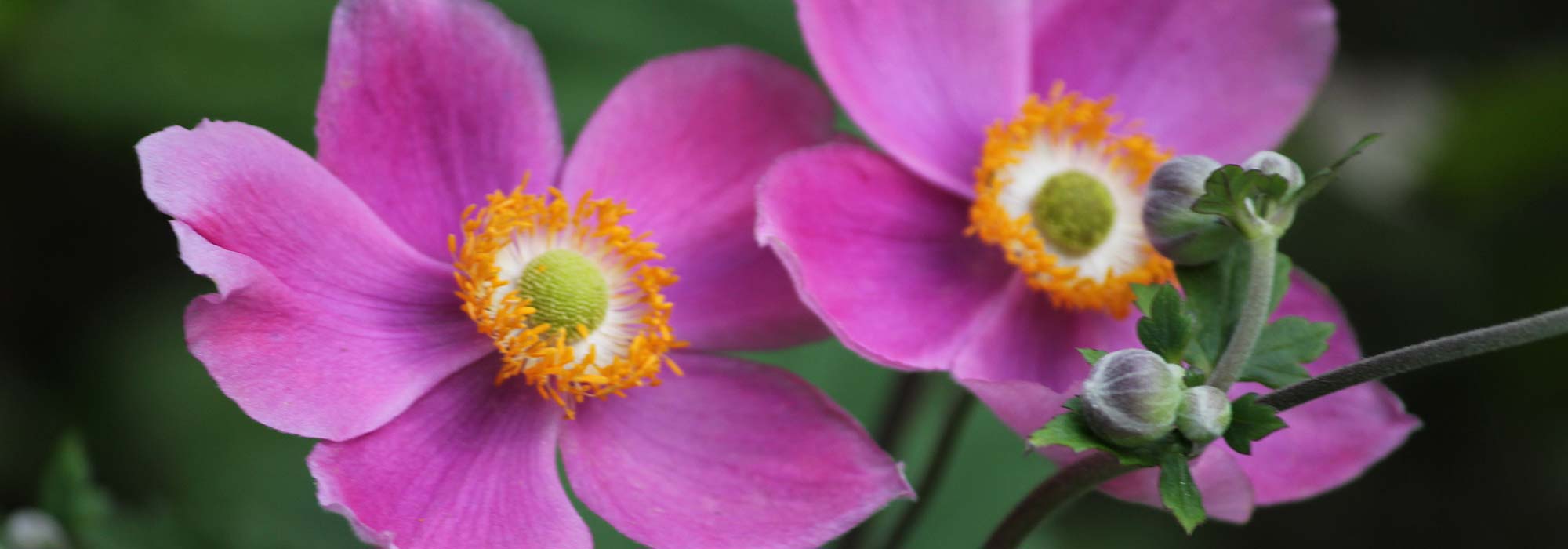
How to grow a Japanese anemone in a pot?
on a a balcony or a terrace
Contents
Perennial plant appreciated for its flowering that begins at the end of summer and continues until the first frosts of winter, the autumn anemones (Anemone hupehensis) have many attractions, such as their small flowers in soft hues that dance with the wind and their late-season flowering that adds splashes of colour to borders. They fit perfectly into garden borders, beds, and can be easily grown in pots or containers on a balcony or terrace, always placed in partial shade.
Here are our valuable tips for successfully growing Japanese anemone in pots, allowing you to enjoy them for many months.
What exposure for potted Japanese anemone?
Plant this beautiful perennial in partial shade, preferably, or choose a location that offers morning or late afternoon sun. Avoid direct sunlight during the hottest hours as the foliage of the Japanese anemone does not appreciate it and may become punctate with burns. Also, prefer a spot sheltered from the wind as its long stems may bend.
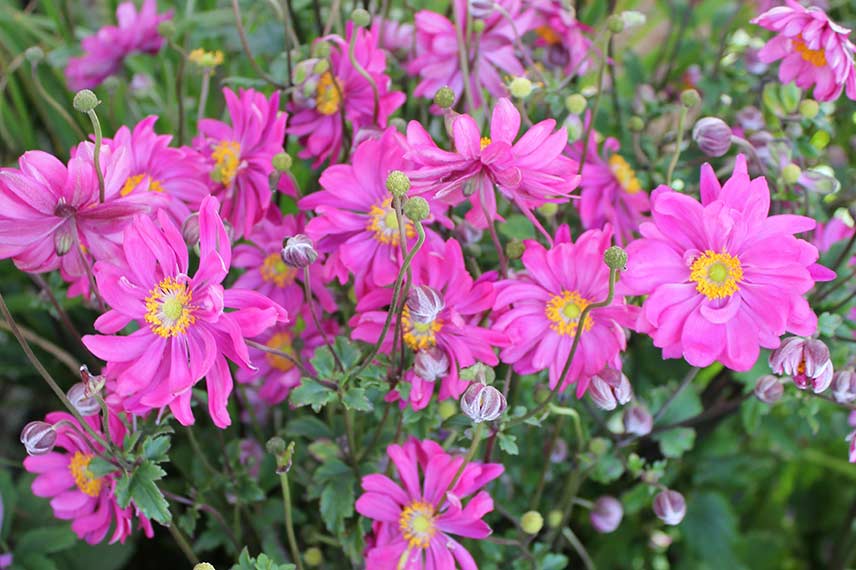
Abundant flowering of the Japanese anemone ‘Bressingham Glow’ (© S.Chaillot)
Read also
Japanese anemones: planting and careWhat type of pot to choose for growing Japanese anemone?
First, consider the environment where the anemone will be placed to maintain the style and ambiance when choosing the pot. Whether in terracotta, plastic, resin, or even in a wooden container, the anemone will appreciate it. Just keep in mind that terracotta allows for better aeration and prevents climate fluctuations.
The two most important criteria are the size, do not choose a pot that is too large, and check for drainage holes in the bottom. Select a pot that is slightly larger than the root ball of the anemone. Grow it alone in a pot with a diameter or side of 30 to 40 cm.
The autumn anemone tends to spread, so repot it as soon as it becomes cramped in its pot.
Discover other Japanese Anemones
View all →Available in 0 sizes
Available in 0 sizes
Available in 0 sizes
Available in 1 sizes
Available in 3 sizes
Available in 3 sizes
Available in 1 sizes
Available in 1 sizes
Available in 4 sizes
Available in 1 sizes
What substrate to use for a Japanese anemone in a pot?
Once the location in partial shade is selected, provide this perennial anemone with rich, humus-rich, cool, and well-drained soil. Avoid alkaline soil, which it does not appreciate and which causes its foliage to yellow. A drainage layer of gravel or clay pellets will be essential.
Which Japanese anemones are suitable for pot cultivation?
For pot cultivation, some varieties are more suitable than others. Here are some examples of Japanese anemones to grow in pots:
- the anemone ‘Fantasy Pocahontas’, with frilly pink flowers and a yellow centre, reaching no more than 45 cm in height, with a low and compact habit.
- the anemone ‘Pretty Lady Susan’, featuring semi-double, bright pink flowers with yellow stamens on stems 55 cm tall, with a compact habit.
- the anemone ‘Septemberglanz’, which produces semi-double, soft pink flowers with a yellow centre. This pink Japanese anemone develops tall stems of 90 cm, so plan to use a decorative stake to keep them upright.
- the anemone ‘Whirlwind’, with an upright habit reaching 1.2 m, produces a multitude of small double flowers. This white Japanese anemone has the unique feature of having pink-tinged backs. Remember to use a stake to support the stems.
- the anemone ‘Pretty Lady Maria’, with single white flowers and a yellow centre, reaching no more than 50 cm in height.
- the anemone ‘Snow Angels’, a white anemone with semi-double pure white flowers and a yellow centre, which can grow up to 50 cm tall.
Most Japanese anemones tolerate pot, trough, or large container cultivation, as long as planting and care conditions are respected.
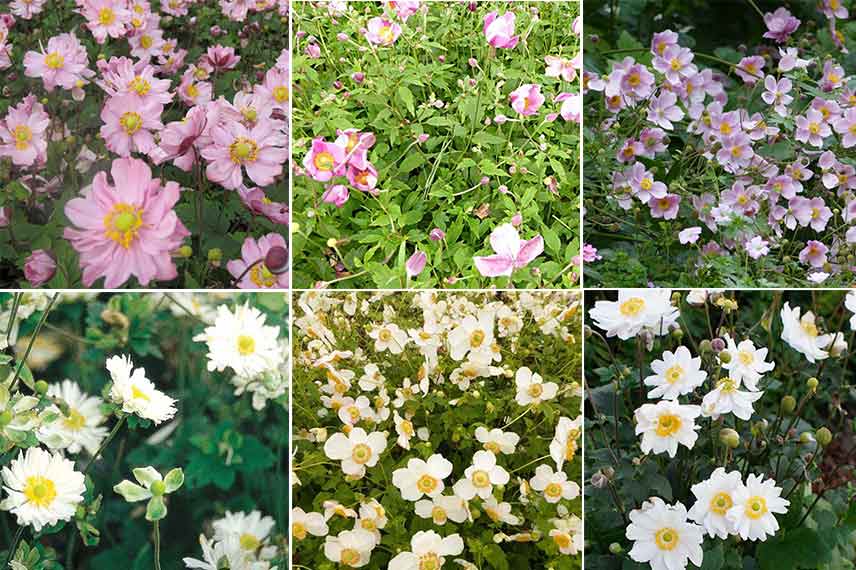 Anemone ‘Fantasy Pocahontas’, ‘Pretty Lady Susan’, ‘Septemberglanz’, ‘Whirlwind’, ‘Pretty Lady Maria’ and ‘Snow Angels’
Anemone ‘Fantasy Pocahontas’, ‘Pretty Lady Susan’, ‘Septemberglanz’, ‘Whirlwind’, ‘Pretty Lady Maria’ and ‘Snow Angels’
When and how to plant Japanese anemone in a pot?
The best option is to choose the shapes and colours of the flowers, so acquire Japanese anemones in autumn. You can also plant Japanese anemones in spring, when the first shoots appear.
Here are the key steps to successfully install a Japanese anemone in a pot:
- take a pot larger than the root ball and with drainage holes in the bottom.
- place a 5 cm layer of drainage (gravel, pieces of terracotta, or clay balls) at the bottom of the pot.
- fill the pot with a horticultural compost (1/2) mixed with decomposed compost (1/2).
- remove the plant from its pot.
- gently untangle the roots.
- place the root ball in the pot.
- fill the gaps with the mixture.
- gently press down with your fingers.
- top up if necessary.
- water generously.
Discover our advice sheet for growing an anemone in the ground
What about watering and fertiliser?
Like all plants grown in containers, be mindful of the soil drying out quickly as water evaporates more easily. During hot summer weather, water the soil while allowing it to dry between waterings. It is preferable to water in the evening or morning to avoid excessive evaporation.
The anemone needs to be fed to thrive, so every year in autumn or early spring, add mature compost to the surface of the pot or a special organic fertiliser for balconies. They will appreciate it!
How to care for Japanese anemone in a pot?
Easy to care for, the anemone requires little maintenance. For tall varieties like ‘Septemberglanz’ or ‘Whirlwind’, consider installing a stake to support the tall stems. Regularly remove faded flowers to encourage the growth of new blooms.
At the beginning of winter, cut the dry stems and leaves back to the ground using pruning shears. In very cold regions, apply a mulch on the surface around the base to protect it from the cold and frosts. If you missed this winter pruning, do it just at the beginning of spring, before growth resumes.
When to repot Japanese anemone?
Japanese anemones take a few years to establish. Once well settled, they can, depending on the varieties, spread and therefore require repotting to aerate their roots. A little visual tip to know whether or not to repot your anemone: as long as you don’t see any suckers or roots coming out of the drainage holes, don’t repot it.
Here are 8 ideas for successful combinations with Japanese anemones. Enjoy these inspirations!
- Subscribe!
- Contents
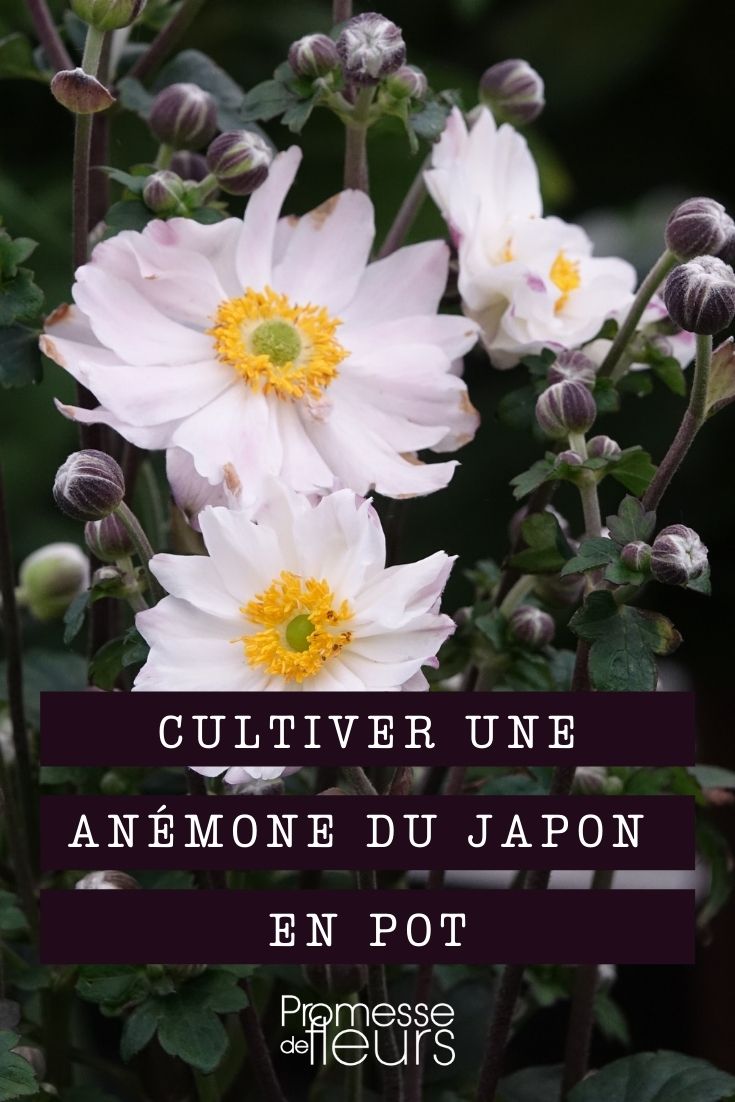































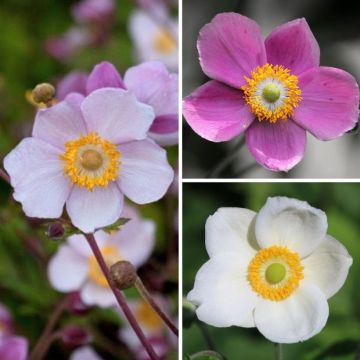
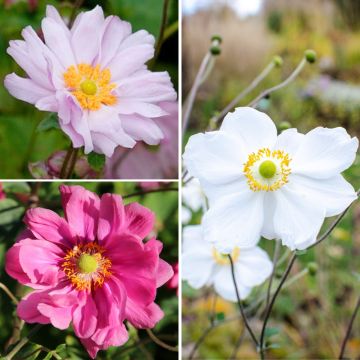
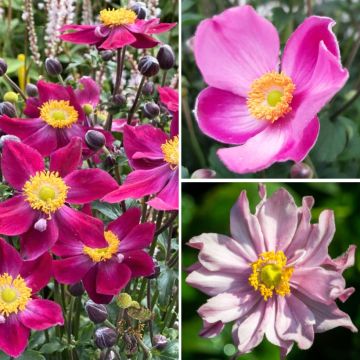
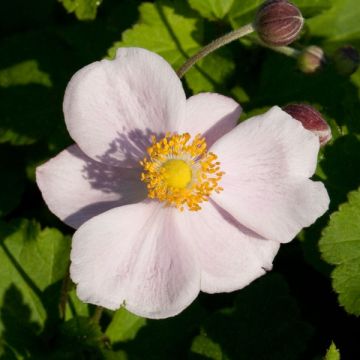
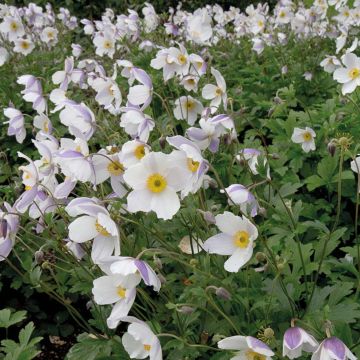
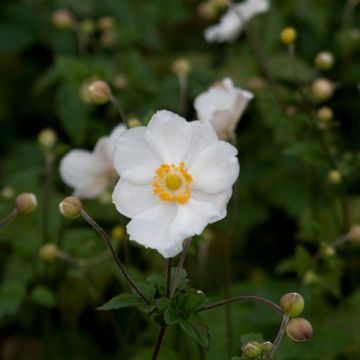
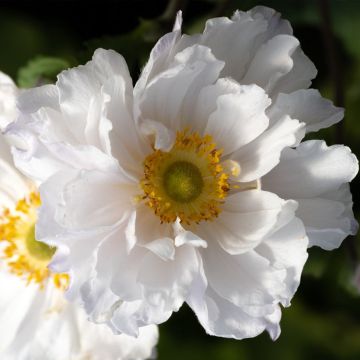
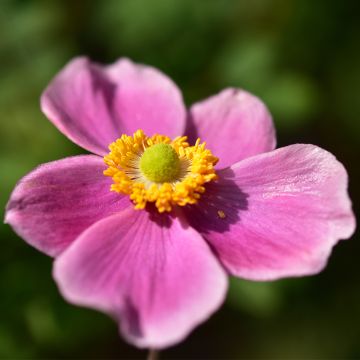
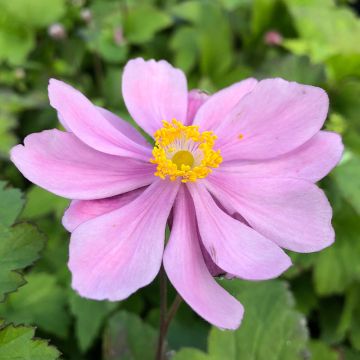
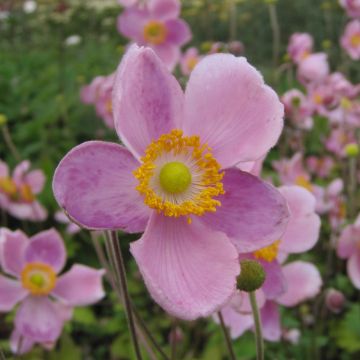
Comments